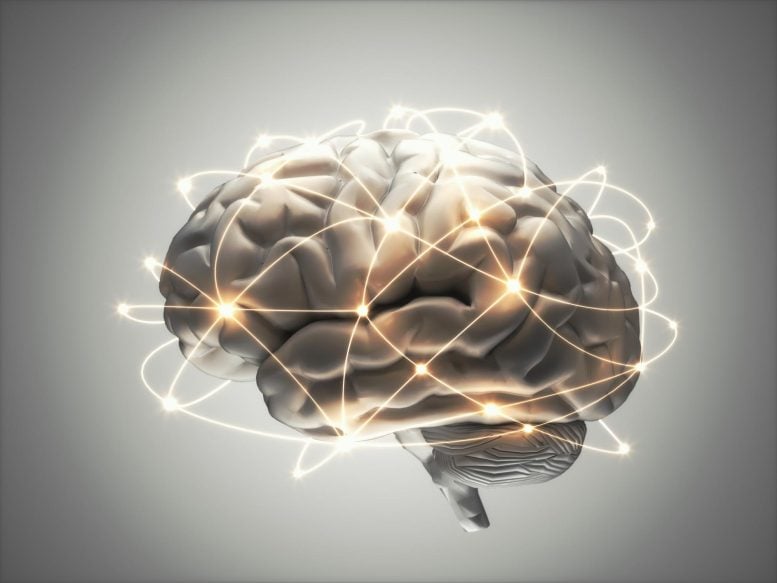

Scientists have collaborated to create the world’s first 3D-printed “brain phantom,” utilizing a special magnetic resonance imaging technique (dMRI) to model brain fibers. This advancement is aimed at improving research into neurodegenerative diseases such as Alzheimer’s, Parkinson’s, and multiple sclerosis by enhancing the accuracy of dMRI analysis software through the use of these detailed brain models.
The new model has the potential to accelerate research into neurodegenerative diseases.
In a joint project between MedUni Vienna and TU Wien, the world’s first 3D-printed “brain phantom” has been developed, which is modelled on the structure of brain fibres and can be imaged using a special variant of magnetic resonance imaging (dMRI).
As a scientific team led by MedUni Vienna and TU Wien has now shown in a study, these brain models can be used to advance research into neurodegenerative diseases such as Alzheimer’s, Parkinson’s, and multiple sclerosis. The research work was published in the journal Advanced Materials Technologies.
Magnetic resonance imaging (MRI) is a widely used diagnostic imaging technique that is primarily used to examine the brain. MRI can be used to examine the structure and function of the brain without the use of ionizing radiation. In a special variant of MRI, diffusion-weighted MRI (dMRI), the direction of the nerve fibers in the brain can also be determined. However, it is very difficult to correctly determine the direction of nerve fibers at the crossing points of nerve fiber bundles, as nerve fibers with different directions overlap there.
In order to further improve the process and test analysis and evaluation methods, an international team in collaboration with the Medical University of Vienna and TU Wien developed a so-called “brain phantom”, which was produced using a high-resolution 3D printing process.
Tiny cube with microchannels
Researchers from the Medical University of Vienna as MRI experts and TU Wien as 3D printing experts worked closely with colleagues from the University of Zurich and the University Medical Centre Hamburg-Eppendorf. Back in 2017, a two-photon polymerization printer was developed at TU Wien that enables upscaled printing.
In the course of this, work was also carried out on brain phantoms as a use case together with the Medical University of Vienna and the University of Zurich. The resulting patent forms the basis for the brain phantom that has now been developed and is being supervised by TU Wien’s Research and Transfer Support team.
Visually, this phantom does not have much to do with a real brain. It is much smaller and has the shape of a cube. Inside it are extremely fine, water-filled microchannels the size of individual cranial nerves. The diameters of these channels are five times thinner than a human hair. In order to imitate the fine network of nerve cells in the brain, the research team led by first authors Michael Woletz (Center for Medical Physics and Biomedical Engineering, MedUni Vienna) and Franziska Chalupa-Gantner (3D Printing and Biofabrication research group, TU Wien) used a rather unusual 3D printing method: two-photon polymerization.
This high-resolution method is primarily used to print microstructures in the nanometre and micrometer range – not for printing three-dimensional structures in the cubic millimeter range. In order to create phantoms of a suitable size for dMRI, the researchers at TU Wien have been working on scaling up the 3D printing process and enabling the printing of larger objects with high-resolution details. Highly scaled 3D printing provides the researchers with very good models that – when viewed under dMRI – make it possible to assign various nerve structures.
Michael Woletz compares this approach to improving the diagnostic capabilities of dMRI with the way a mobile phone camera works: “We see the greatest progress in photography with mobile phone cameras not necessarily in new, better lenses, but in the software that improves the captured images. The situation is similar with dMRI: using the newly developed brain phantom, we can adjust the analysis software much more precisely and thus improve the quality of the measured data and reconstruct the neural architecture of the brain more accurately.”
Brain phantom trains analysis software
The authentic reproduction of characteristic nerve structures in the brain is therefore important for “training” the dMRI analysis software. The use of 3D printing makes it possible to create diverse and complex designs that can be modified and customized. The brain phantoms thus depict areas in the brain that generate particularly complex signals and are therefore difficult to analyze, such as intersecting nerve pathways.
In order to calibrate the analysis software, the brain phantom is therefore examined using dMRI, and the measured data is analyzed as in a real brain. Thanks to 3D printing, the design of the phantoms is precisely known and the results of the analysis can be checked. MedUni Vienna and TU Wien were able to show that this works as part of the joint research work. The phantoms developed can be used to improve dMRI, which can benefit the planning of operations and research into neurodegenerative diseases such as Alzheimer’s, Parkinson’s, and multiple sclerosis.
Despite the proof of concept, the team still faces challenges. The biggest challenge at the moment is scaling up the method: “The high resolution of two-photon polymerization makes it possible to print details in the micro- and nanometre range and is therefore very suitable for imaging cranial nerves. At the same time, however, it takes a correspondingly long time to print a cube several cubic centimeters in size using this technique,” explains Chalupa-Gantner. “We are therefore not only aiming to develop even more complex designs, but also to further optimize the printing process itself.”
Reference: “Toward Printing the Brain: A Microstructural Ground Truth Phantom for MRI” by Michael Woletz, Franziska Chalupa-Gantner, Benedikt Hager, Alexander Ricke, Siawoosh Mohammadi, Stefan Binder, Stefan Baudis, Aleksandr Ovsianikov, Christian Windischberger and Zoltan Nagy, 07 January 2024, Advanced Materials Technologies.
DOI: 10.1002/admt.202300176
